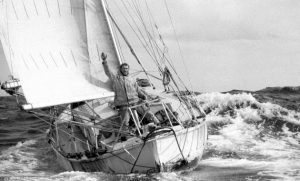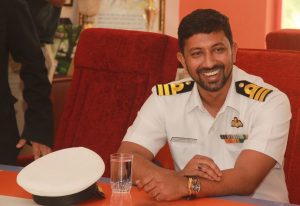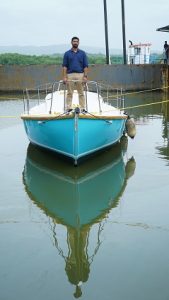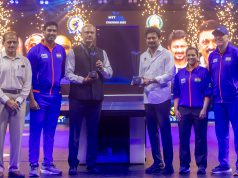There was a sailor with a boat who had dared to face the oceans all alone. In August 1966, British yachtsman Francis Chichester set out from England to sail solo around the world to Australia and back via the five great Capes in the 16m Gipsy Moth IV. He completed the circumnavigation in 274 days including the stopover in Sydney to set a record for the fastest voyage around the world in a small boat. Chishester inspired other sailors to think of sailing around the world but doing it non-stop. So in 1968, the Sunday Times Golden Globe Race was announced – the first ever attempt to sail solo non-stop around the world.

The route of the journey started from British Isles and headed south down the western coast of Africa before turning east around the Cape of Good Hope and into the southern Indian Ocean. From there, it continued under Australia and New Zealand before a long run across the southern Pacific Ocean. After rounding Cape Horn, the race ran parallel to the Brazilian coast. Then after crossing the equator it made its way back to Britain.
Nine men started the journey but only one finished. Robin Knox-Johnston completed the solo circumnavigation with his 9.75m traditional double ended yacht ‘Suhaili’, built at Mumbai in 1963. The rest of the sailors either sank or retired or committed suicide. This Golden Globe Race quickly became legend to sailors and non-sailors that celebrated human endeavor, sustainability and tragic losses at the same time.
To commemorate the 50th anniversary of the race, the organisers have decided to recreate the event that is scheduled to start from Plymouth, England, on 30 June 2018. The race will be conducted following the same rules and only the technology available during the first race. But this time there will be 30 entrants from around the world and 5 got special invitations. One of those five is Commander Abhilash Tomy, the first and only Indian to complete a solo, unassisted, non-stop circumnavigation under sail.

A serving officer in the Indian Navy, Abhilash Tomy definitely has an advantage. He has covered 52,000 miles under sail while in the Navy including a solo non-stop circumnavigation from Mumbai and back in 2012/13. He has also represented India in the 2011 Cape Town to Rio Race, the Spanish Copa del Rey Race in 2014 and the Korea Cup for two years in succession.
The rules of GGR-18 allow only classic production boats between 32 to 36 feet to participate. At least 20 production boats should have been built from the same mould for a boat to be eligible to race. However, an exception is made if a new boat is a replica of the Suhaili. To celebrate India’s heritage in building famous singlehanded yachts in the past, Abhilash will be racing with his boat Thuriya, a replica of Sir Robin Knox-Johnston’s original winner. The name of the boat is derived from the Upanishads, which describe Thuriya as a state of pure consciousness, or the background that underlies and transcends the three common states of consciousness.

Making of Abhilash’s boat began at the Aquarius shipyard on Goa in 2016, not with the rudimentary adze, bow drill and hand saw that shaped Suhaili in a Bombay shipyard five decades before, but with the latest CAD design and CNC cutting machinery to produce a much lighter wood epoxy composite replica. ‘Thuriya’ got launched at Aquarius Shipyard, Diwar Island, Goa on 7 August 2017. The hull is being launched today. Fitment will continue. The boat will be commissioned in September 2017.
Abhilash has recently launched a crowd-funding campaign for his Golden Globe Race. If you want to contribute please visit https://www.ketto.org/fundraiser/abhilashtomyGGR




